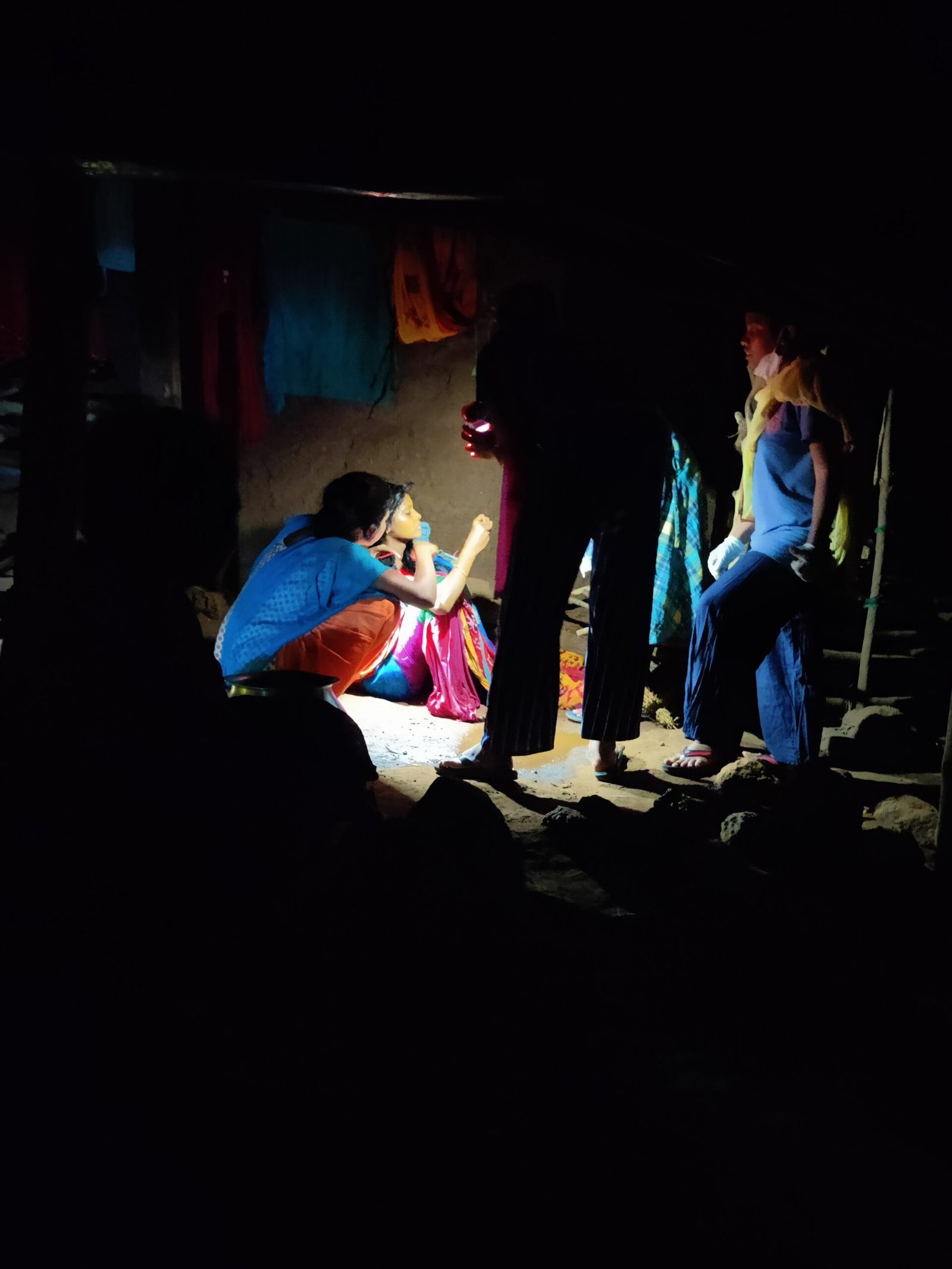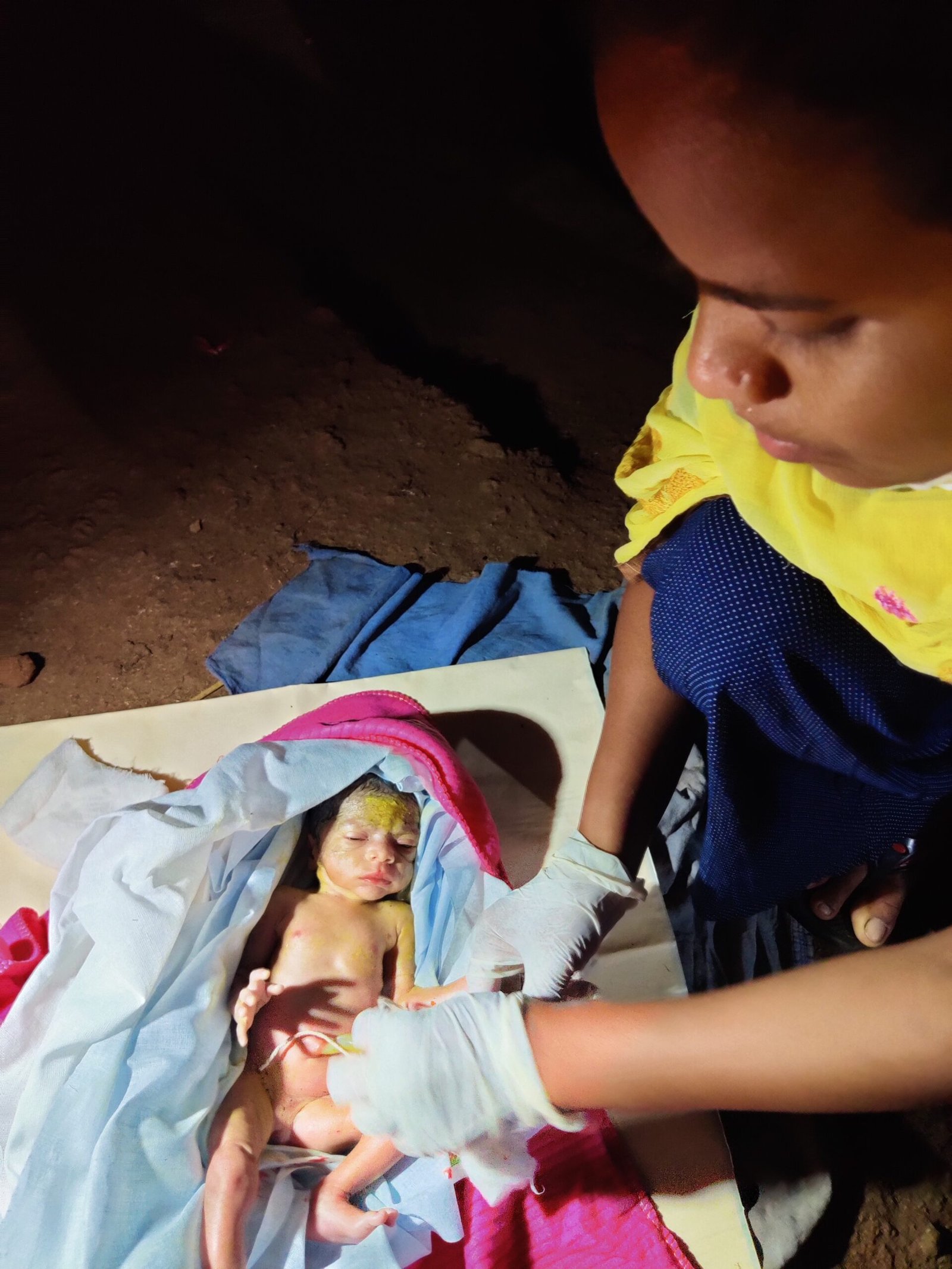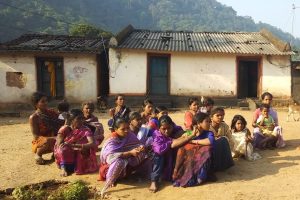Written by Dr Surabhi Sanjay, Junior Medical Officer
It was one of those relaxed OPD days at Kerpai where we sat down late evening soaking in the cool breeze after a hot sunny day, when Maha Dei, one of our Swasthya Sathis from Kerpai village came running into the clinic premises barefoot and panting. While she tried to catch her breath, she informed us about a young woman who had delivered a baby in the upper part of the village much before her date.
I had always heard stories from the staff about how the tribal women deliver in the villages, outside the comfort of their homes, unassisted, on their own and even cleaning up after themselves once the ordeal is over. So, we put on our headlamps and I keenly accompanied Anjana and the other clinic staff as we followed the Swasthya Sathi to the place of birth.
I’m not sure what I was expecting while I walked up there. Was I expecting them to be happy a doctor came all the way to assist a woman to deliver or was I expecting to see a situation where I could jump right in and save lives? We were walking into that dark lane on top of a hillock, led us to a cowshed or a pig pen where a small petite 15-16 years old girl was squatting in the dirt over a pool of blood. A small baby about the size of a man’s palm, covered in dirt and fresh turmeric was held next to a bucket of water, being washed and scrubbed by one of the elder women of the village. At this point my ability to jump right in and save the day immediately took a back seat. I stood there watching helplessly while the staff sprung straight to action.
We divided into two groups, four helping the woman get to a cleaner spot and two of us tending to the baby. I took the baby into my hands and realised I was holding a little girl who hardly weighed a Kilo, eyes still glued together, with a feeble weak cry as she shivered due to the cold. We immediately dried and cleaned the baby. The chord was already cut and was bleeding as it wasn’t tied. We clamped the chord and tied with the thread. She was then snugly wrapped with a clean blanket. I held her close and tight to keep her warm till help arrived.


While Anjana and I managed the baby, Napa along with the DCHP interns Basanti, Damen and Sasmita tended to the mother and got her to lie down in a dry place. On checking her vitals, she had a very low BP. Women from the neighbouring houses had surrounded us by now, not to provide a helping hand but to see what the ordeal was about. They told us that she hadn’t eaten anything for two days, so she was then given ORS in sips and comforted as we helplessly waited for the clinic vehicle to pick us up from here. None of the men from the village came forward to help including her husband who was not any older than 20 himself.
Soon we were picked up and brought to the clinic where Sasmita, Dr. Sandya and the remaining clinic staff promptly took care of the mother and baby ensuring they were comfortable and their vitals stable.
Once the mother’s condition improved, we began trying to initiate breastfeeds but since she did not have any breast milk for the first couple of hours the decision to start formula feeds was made. Consulting a paediatrician on call, we began 2 hourly feed for the baby via an NG tube, medication through an IV cannula and round the clock nursing care ensuring the baby was doing okay.
All of this felt challenging to us, taking risks and managing a VLBW baby this small in a centre so remote. The staff took up the challenge with utmost dedication and confidence. They took turns on their own and managed to take care of this tiny neonate all by themselves. They ensured the baby received KMC when not being fed and also involved the father in the process by encouraging him to stay inside and help with feeding and care as well.
The mother began having adequate breast milk 3-4 days after birth. Formula feeds were stopped and direct breastfeeding was initiated along with expressed breast milk being fed through a paladai. The staff at Kerpai even called me a few days later to let me know how happy and comfortable the mother has been, that she doesn’t want to go home and would want to stay at the clinic till the baby gains some more weight.
While the story could have ended well with the little girl born in these harsh conditions managing to pull through, the reality is that the struggles were just beginning. The baby was instead taken back home by her father and his family despite the mother’s displeasure. After a week in the clinic this little infant still weighing just one kilo, went back home for rituals and traditions that wouldn’t wait till the baby gained some weight.
What choice did this young mother really have this entire time? Did she have a say in anything at all? She is just one of the many young girls in this part of the world who got married as soon as she attained menarche, got pregnant before she knew how, and will endure this again and again without thought and opinion till she can’t anymore.
Frustrated and helpless is what I felt that night. Not being able to do anything, watching this young girl take home her baby who might not survive.
Despite the odds, if this baby does manage to survive, I hope she grows into a healthy child. And one day when she does grow up into a woman of her own, I pray society helps her take charge of her life, make choices and do what she feels right – For there’s no need to have survived if she can’t thrive.

